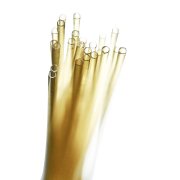What is ERCP? Procedure Steps and Detailed Overview of Catheter Consumables
Introduction to ERCP
ERCP (Endoscopic Retrograde Cholangiopancreatography) is a minimally invasive procedure that combines endoscopy and X-ray imaging to diagnose and treat bile duct and pancreatic duct diseases. By inserting an endoscope through the patient’s mouth and into the duodenum, the physician can locate the openings of the bile and pancreatic ducts. By injecting a contrast dye, the ducts become visible under X-ray. This procedure allows the physician to observe obstructions, inflammation, stones, or tumors within the biliary system. Additionally, ERCP can perform various therapeutic actions, including dilation of strictures, stone removal, and stent placement.
Indications for ERCP
ERCP is primarily indicated for the following conditions:
Bile duct obstruction: Blockages in the bile duct caused by gallstones, strictures, or tumors.
Pancreatic diseases: Conditions such as pancreatic duct stricture, pancreatitis, or pancreatic tumors.
Bile duct stones: ERCP can be used to remove stones within the bile duct.
Bile duct infections: Infections like cholangitis caused by bacterial infections; ERCP helps clear obstructions that cause infection.
Pancreaticobiliary leaks: ERCP can aid in drainage or stent placement to restore normal passage in cases of pancreatic leaks or bile duct injuries.
Key Steps of the ERCP Procedure
Endoscope Insertion and Positioning:
The physician inserts the endoscope through the patient’s mouth, passing it through the esophagus and stomach into the duodenum. Upon locating the duodenal papilla (the opening of the bile and pancreatic ducts), the physician positions the endoscope precisely to ensure accurate placement within the ducts while avoiding other parts of the digestive tract.
Cannulation and Injection of Contrast Dye:
Using a cannulation catheter, the physician inserts it into the duodenal papilla and injects a contrast dye, allowing the bile and pancreatic ducts to become visible under X-ray. The injected dye enables the physician to examine the shape and location of any abnormalities, facilitating further diagnosis.
Therapeutic Procedures:
Stricture dilation: If a stricture is present within the bile or pancreatic ducts, guidewires and balloon catheters can be used to expand the narrowed area.
Stone extraction: For patients with stones in the bile or pancreatic ducts, a stone extraction basket or balloon is used to remove the stones.
Stent placement: In cases of severe bile duct stricture, the physician may place a drainage stent to maintain bile or pancreatic fluid flow.
Tissue Sampling:
If any abnormal growths or tumors are identified, the physician can perform a biopsy using specialized forceps to collect tissue samples for pathological analysis.
IV. Main Catheter Consumables in ERCP
Cannulation Catheters
Function: Cannulation catheters are used to inject contrast dye into the bile or pancreatic ducts to visualize them under X-ray. These catheters are designed to allow flexible insertion and operation within complex anatomical structures.
Design Features:
High Flexibility: Typically made of soft materials, the catheter can pass smoothly through the digestive tract, minimizing trauma to gastrointestinal tissues.
Precision Tip: The finely designed tip ensures accurate positioning in complex regions.
Sphincterotome
Function: The sphincterotome is an electrosurgical instrument used to make an incision in the duodenal papilla, widening the entry points to the bile and pancreatic ducts for catheter or instrument insertion.
Design Features:
Adjustable Angle: Allows the physician to adjust the angle, ensuring precise operation tailored to different lesion conditions.
Electrocautery Capability: Reduces bleeding by simultaneously cutting and coagulating tissue.
Drainage Stents
Function: Drainage stents are used to maintain ductal patency in cases of bile duct or pancreatic duct obstruction, providing long-term drainage.
Design Features:
Resistance to Bile and Pancreatic Fluid Corrosion: Constructed from corrosion-resistant materials suitable for long-term use.
Multiple Drainage Holes: The stent contains multiple drainage holes to ensure smooth fluid outflow, reducing the risk of blockage.
Injection Needles
Function: Injection needles are used to administer anesthetics or medications during the procedure. They are also occasionally used to inject contrast dye, enhancing X-ray imaging.
Design Features:
Fine Needle Tip: The small needle tip ensures accurate injection and minimizes tissue impact.
Enhanced Control: Adjustable angles enable precise injection, allowing the physician to perform accurate operations.
Stone Extraction Basket
Function: Used to retrieve stones from the bile or pancreatic ducts. The extraction basket is made of durable woven wire.
Design Features:
High-Strength Grasping: The netted design provides strong grip and secure stone removal.
Adjustable Size: The basket can expand and contract to accommodate stones of varying sizes.
ERCP is a minimally invasive technique guided by endoscopy and X-ray imaging, widely used for the diagnosis and treatment of bile and pancreatic duct diseases. The main consumables used in this procedure—cannulation catheters, sphincterotomes, drainage stents, injection needles, and stone extraction baskets—enable precise operations, imaging, and lesion treatment. High-quality catheter consumables are crucial for improving ERCP success rates and minimizing the risk of complications.
Eco Polymer: Where Innovation Meets Excellence in Medical Device Manufacturing.


Contact us
As a leading Contract Manufacturing Organization (CMO), we excel in custom medical catheters and membranes, from prototyping to mass production. Our focus: unparalleled R&D innovation and rigorous quality validation.




